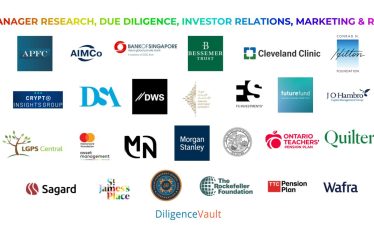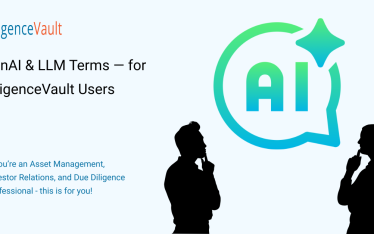At DiligenceVault our clients and prospects engage with us as they move to improve efficiencies in their business. They often tell us they are considering whether to build a proprietary tech system to support their diligence or investor relations process or to buy existing product. Here’s what we can suggest from our collaboration with them.
**Defining the End Goal**
Start with being clear about your objectives. What are the must-have features you need at present and in the future? What is your timeline, given other projects and deliverables? What is your budget? Do you have the technical expertise in-house to build and maintain a competitive solution? Is integration important? Is mobility important? Create a formal outline of the processes you want to support or improve. Note pain points and ‘low-brainer’ repeatable tasks. Work on developing process metrics, KPIs, and a target ROI and vision of where you would like to be.
Industry Standard and Canned vs Customized
Off the shelf product generally is quicker to implement, easier to maintain, and upgrades are standard. There’s a lot to be said for not reinventing the wheel if a good working solution exists. For example, no one tries to build their own CRM, office suite, or blogging platform, because all that functionality is readily available. If you buy an existing product, a key question is how much work it requires from your side to customize, because it can be significant.
For larger fund managers and allocators, building their own tech platforms has provided a competitive advantage, because they can spread the cost over a large client base. This is also because the investment industry has been slow to develop and adopt industry-standard functionality. In our case, many aspects of investment research and due diligence, as well as communication around RFIs and DDQs appear to be fragmented. There are some tech alternatives available, but they tend to be segmented by asset class or market, perhaps focusing only on private equity, or traditional mutual funds, or else serving only the RIA market. The result is a plethora of niche functionality vendors, requiring cumbersome integrations that may result in inefficient, manual work.
User Interface and Experience: Avoid ‘Clunky’
Whether you build or buy, take your time to review the product carefully to ensure that it provides a smooth user experience. Any product is strengthened with use and feedback. Whether your tech is sourced internally or externally, your providers should continuously be soliciting and implementing feedback from you. Without a well-oiled feedback loop between users and tech, including responsiveness to requests for support and improvements, you wind up with something ‘clunky’. You will have basic functionality, but likely not the efficiencies you wanted that come from a more polished user interface and ongoing product evolution. ‘Clunky’ means you are leaking time and money.
Support of Strategic Objectives
Whether built or bought, your tech should support your strategic objectives.
• Does it give you an ability to differentiate yourselves from your peers?
• Does it provide a competitive advantage in terms of faster reaction time to client requests or market conditions?
• Does it allow your team to scale efficiently?
• Can you readily implement it in the case of mergers, acquisitions, divestitures, and continuous process improvement?
At DiligenceVault, we believe that your valuable resources are best deployed in making more informed investment decisions or scaling your investor engagement. We have built a platform that is mutualized for both investors and asset managers, which is easy to use and configure, is scalable and secure, and helps you reduce software development time.
If you are thinking about tech, I hope the above has been helpful to your thought process. If you have questions or other opinions, I’d like to hear from you and to show you DiligenceVault in action!



